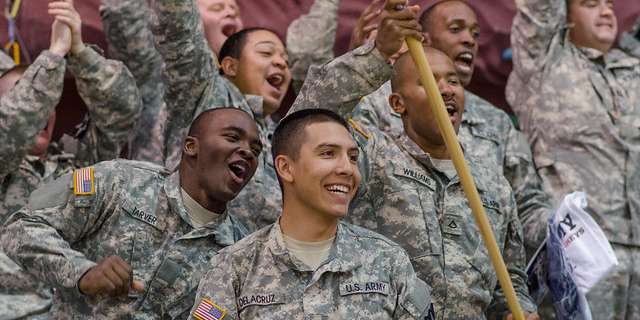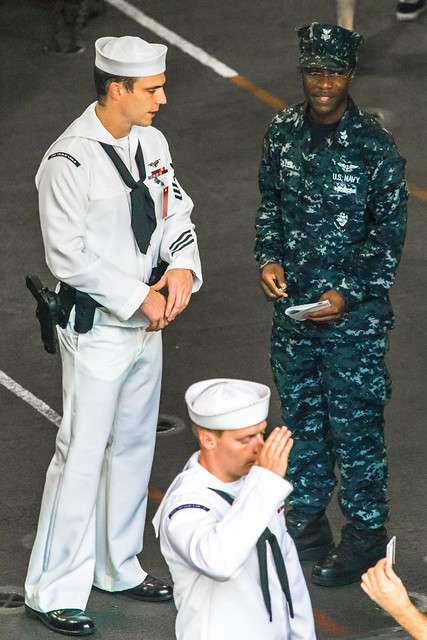
U.S. Soldiers celebrating at the Armed Forces Classic game day in South Korea. Image Credit: Flickr User USAG – Humphreys
The U.S. military and uniformed services purchase their textiles based on specifications that have been enshrined in a series of laws1. The Berry Amendment and the Kissell amendment detail exactly what fabrics and colors are suitable, for everything from camouflage and dress uniforms to tarps and vehicle coverings. For U.S. textile manufacturers, this presents an opportunity to lock down steady contracts, whose requirements do not change as often as those of the ever-evolving world of fashion. With approximately 31,000 line items purchased every year, these contracts can provide a significant amount of revenue for textile makers. Companies manufacturing textiles for U.S. allies must meet similar legal requirements and are presented with similar opportunities.
This is a double-edged sword, however, requiring rigorous quality control systems from manufacturers. If a batch of textiles should fail to meet the standards prescribed by law, it will be rejected and manufacturers must eat the cost of materials, labor, and delivery. Even more alarming, repeated failures could cause the Defense Logistics Agency to end the contract. This would have an immediate, chilling effect on a company’s operations. Fortunately for manufacturers, this is a simpler standard to meet than the whims of designers. It’s an open book test; all manufacturers need to do to ensure they meet requirements is look up the specifications and test their products before delivery to make sure they match. The requirements should be included with the contract paperwork, and if not, will be available on request.
Military textiles like camouflage are designed to protect warfighters and help them blend into their surroundings. Image Credit: Flickr User Program Executive Office Soldier



